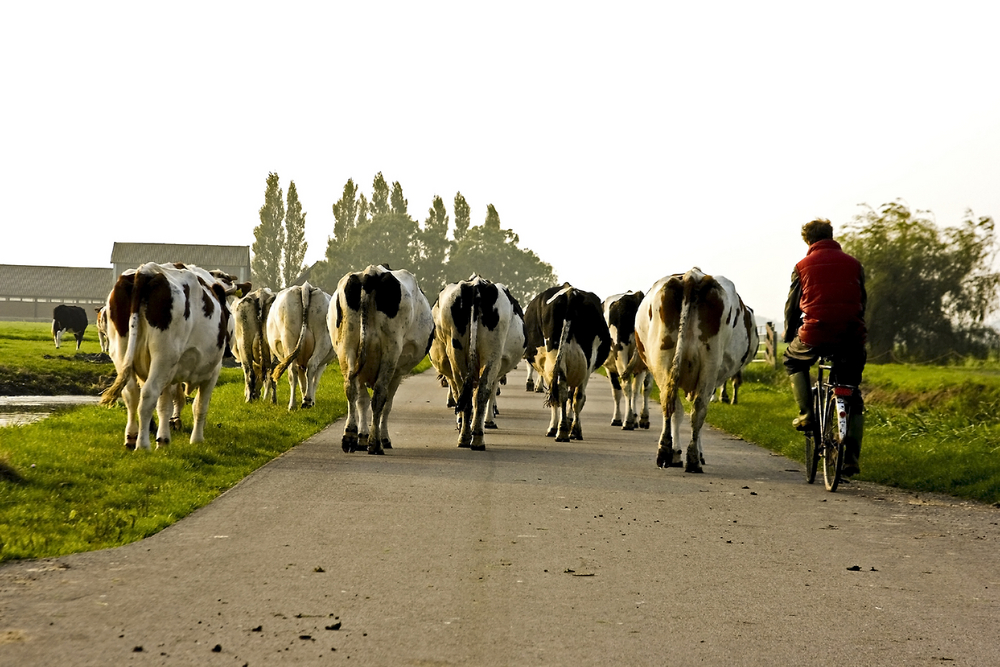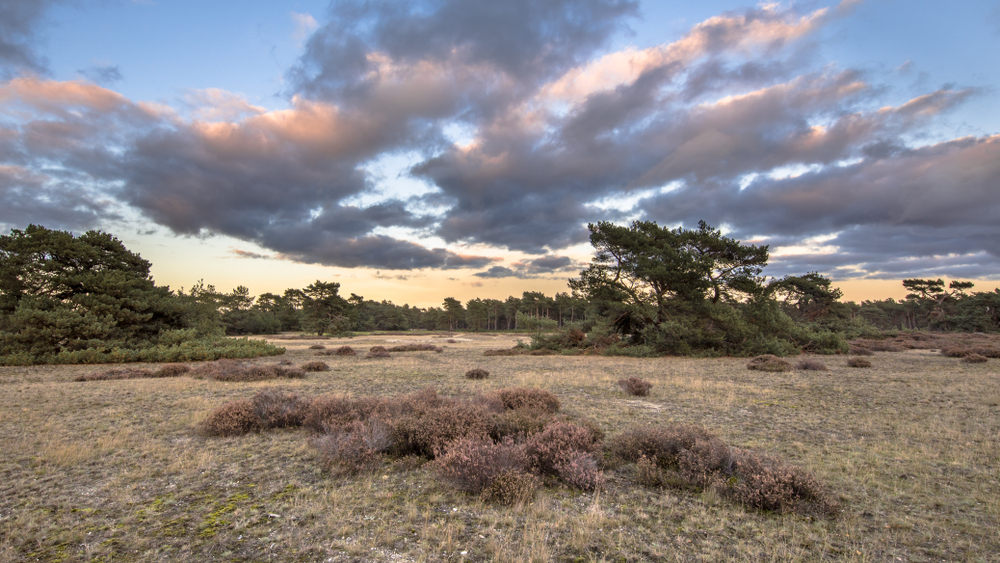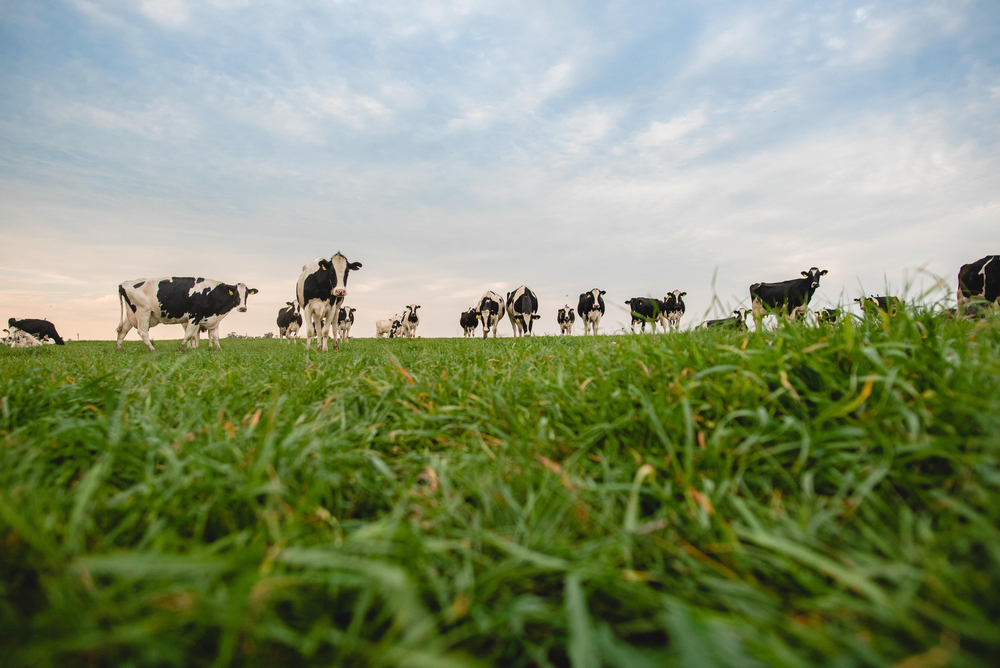Wageningen nitrogen experts were surprised when Minister Wiersma announced last month that the cabinet would end the National Rural Areas Programme (Dutch: Nationaal Programma Landelijk Gebied -NPLG), which addresses nitrogen and water quality issues. Resource asked several experts to share their views on how this may impact their domain. In this episode: Gerard Migchels, researcher at Wageningen Livestock Research and project leader Netwerk Praktijkbedrijven.
At the time we started this Resource series, the minister had not yet visited the House of Representatives. In the meantime, she has clarified why she is stopping the NPLG: no more funding is available. The over 20 billion euros the previous government earmarked for this endeavour has been reduced to 5 billion. ‘While the goals remain the same’, Migchels emphasises. This is an excellent opportunity for the Netwerk Praktijkbedrijven. He explains his views to Resource.
About the Netwerk Praktijkbedrijven
The Netwerk Praktijkbedrijven studies what combination of feed, animal and barn management is needed to achieve the desired 30 per cent reduction in ammonia and methane emissions. The network consists of over one hundred dairy farms, both large and small, organic and regular, and intensive and extensive. The network is a partnership between WUR and LTO and was initiated in 2020. More information is provided on netwerkpraktijkbedrijven.nl.
‘The network has already proven successful with ammonia emissions. We achieved a 25 per cent reduction per hectare or unit of cattle in three years with the contributing farms. If you apply this to colleague Wim de Vries’ theory that the agricultural sector should reduce its ammonia emissions by half, we have already achieved half of the required reduction using measures that can be applied to normal operational management. With funds now depleted, this provides the minister with an incredibly important pathway towards solutions.’
‘The network certainly offers hope but also calls for humility as there is a rather large gap between what we can achieve scientifically ceteris paribus and the findings in practice. The network conducts readings in barns at fifteen different dairy farms, and we sometimes encounter margins of error of between 30 and 50 per cent that we are unable to explain at this time. That shows just how unmanageable practice can be. Hence, we must take more readings to explain this static so that we can continue our modelling.’
Goal steering
‘When I talk to farmers, I don’t get the same enthusiasm about goal steering (farmers are tasked with environmental goals and are free to achieve them through any method they see fit, ed.) as when I talk to administrators. The farmers feel things may be getting a little too complicated now. “Just give us a list of measures with a predetermined reduction factor, and we will implement them”. The new government is all about measuring. I agree, but you can’t ignore modelling when you want to achieve goal steering affordably. Taking readings at each separate farm is not viable.’ Methane is a different story (see box, ed.), but I always tell the farmers it will be fine as long as we follow the three pathways Wageningen repeatedly suggests. First, buying production rights to reduce the number of animals. Secondly, farms must extensify, which is also a way to reduce the number of animals, for example, by increasing the share of organic produce. The third pathway is innovation via management, which is what the Network does, and new technologies, such as barn systems or manure distributing systems. The minister is enthusiastic about the latter. However, the innovations she prefers, such as a Lely Sphere or a Gazoo, have a negative earning model, making these options difficult in terms of viability. Administrations have run out of money, which means reducing emissions must also be profitable for the farmer.’
Ammonia versus methane
With a 25 per cent reduction, the Netwerk Praktijkbedrijven has successfully cut back ammonia emissions in the third year of its five-year existence (policy deadline 2035). Methane (policy deadline: 2030), however, is a different story, says Migchels. ‘The network promised at the time that we would also achieve a 30 per cent methane reduction. But this is a tough issue. Here, the network has achieved a reduction of less than five per cent so far.’
‘I think solutions lie primarily in multiple uses of space. The innovations we apply in the network businesses have an internal revenue system. Farmers need fewer feed concentrates and less fertiliser, reducing their costs. Switching to organic farming is also a strategy that creates revenues. Multiple uses of space is also promising as it broadens the options a farmer has to make a profit, for example, by hosting solar panels, growing for biomass or constructing a few residential properties on the farm. This courtyard model requires permits, but the Environmental Planning Bill offers room for a more integrated approach than the previous zoning plans.’
Stopping and steps
‘There are three farms among the forty research farms within the Network that are going to quit, almost 10 per cent. A lot, in my opinion. And these include farms that are doing very well. Farmers sometimes just do the maths, even if they have relatively large amounts of land and modern barns. Let’s hope that the measures to encourage farmers to sell don’t lead to unintended upscaling and intensification. This is what worries me.’
‘I believe the time is now ripe to take substantial steps. And that is what I tell farmers. If you want to support the PAS-reporters* in your area, implement the Network’s measures. If a 25 per cent reduction in emissions within an area has been achieved, which can be proven by adding up all the businesses in the area, the judge can show leniency. So, go ahead and implement the Network’s measures, and help your colleagues who are in a squeeze.’
* Legalisation of PAS reporters is urgent; the Council of State has ordered provinces to enforce the mandatory permits for the approximately 2500 PAS reporters as of 1 March 2025. Environmental organisation MOB has already announced a tsunami of court cases should they fail to do so. PAS-reporters are businesses that fall within the former nitrogen regulation (Programma Aanpak Stikstof, PAS) and were not required to have a nature permit; a calculation of nitrogen was deemed sufficient. In 2019, the Council of State overturned the legal argumentation underpinning this situation and, in doing so, their exemption from the permit requirements. The cabinet promised a solution but lacked room within the nitrogen maximum to grant the permits. That room may become available if other farmers in the area reduce their ammonia emissions by 25 per cent.
Nitrogen series
Episode #1 – ‘I believe the minister’s strategy is risky’ with Roel Jongeneel
Episode #2 – ‘Goal steering does not make nitrogen reduction easy all of a sudden’ with Edo Gies
Episode #3 – ‘The industry of doubt has hopefully become obsolete’ with Karin Groenestein
Episode #4 – ‘I expect the feed option to be brought back to the table’ with Jan Dijkstra
Episode #5 – ‘The funds are depleted, so we need smart solutions’ with Gerard Migchels
Episode #6 – ‘Let’s start goal-steering through a relatively simple system’ with Wim de Vries

 There are excellent businesses among those that are quitting, says researcher Gerard Migchels. ‘Farmers sometimes just do the maths, even if they have relatively large amounts of land and modern barns.’ Photo Shutterstock
There are excellent businesses among those that are quitting, says researcher Gerard Migchels. ‘Farmers sometimes just do the maths, even if they have relatively large amounts of land and modern barns.’ Photo Shutterstock 

